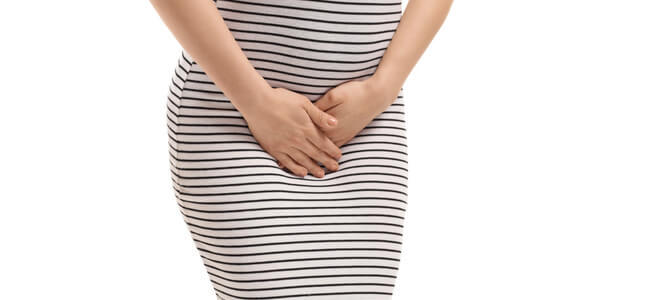Breakthroughs to Benefit your Bladder
 This article was written by Dr. Nicole Fleischmann From White Plains Hospital
This article was written by Dr. Nicole Fleischmann From White Plains Hospital
Concentrating at work, relaxing at leisure, or even getting a good night’s sleep isn’t easy when the urge to urinate intrudes, as many women seeking help can confirm. And you don’t have to suffer from accidents to benefit from treatment. The broader problem is really urinary issues: not just incontinence but frequency or always running to the bathroom. These issues, which are not often talked about, affect probably one-third to one-half of women in their lifetimes.
It’s important to draw a distinction between urge incontinence and stress incontinence. Both are rooted in the weakening of the bladder muscles, but stress incontinence results from pressure on the bladder, whereas urge incontinence results from spasms in the bladder itself:
Urge Incontinence
The frequent and persistent feeling of having to urinate is also known as “overactive bladder.” The most typical cause is aging, though some women have spastic pelvic floor muscles or neurological issues that underlie the condition. The first approach women should take is to modify their diets and try exercises such as Kegels. The next option to try is medication. For women who might not tolerate medicine, there are a few other innovative options:
• Nerve stimulation, or InterStim. Like a pacemaker for the bladder, this technology is implanted under the skin to control the bladder’s nerve impulses and function, “normalizing” the signals between bladder and brain.
• Botox. A short-term solution, Botox is injected directly into the bladder through a small tube called a cystoscope to control bladder spasms for six to nine months.
Stress Incontinence
This condition occurs when activity like coughing, sneezing, laughing, or heavy lifting places enough stress on the bladder to cause leakage. The leading risk factor for this condition is childbirth, but previous pelvic surgeries, or tissue that’s genetically weak, can also contribute. There are several treatment methods:
• Mid-urethral sling. This traditional therapy requires a minor outpatient surgery in which a mesh implant is placed under the urethra to strengthen it.
• Bulking. An injection is used to tighten and cushion the opening of the bladder. A permanent water gel called Bulkamid, a mainstream procedure in Europe for over a decade, is the first bulking agent that does not dissolve over time—and helps to seal off bladder leaks. At White Plains Hospital, this non-invasive procedure has helped a significant number of patients who were struggling with stress incontinence, but existing treatments were proving to be too invasive to effectively fix the issue. It takes just five minutes to inject it into the urethra, has no downtime, and has proven 80 % effective at eradicating stress incontinence completely.
• Beta adrenergics. The newer medicines have a very low side-effect profile and do not cause the dry mouth and constipation of traditional treatment medicines.
How to Prevent Incontinence?
• Drink eight glasses of water over the course of the day.
• Limit coffee and soda intake.
• Keep your pelvic floor muscles in shape with exercises such as Kegels.
• Pick a physical activity you enjoy in order to maintain a healthy body weight.
• Treat UTIs immediately. Although incontinence can be difficult to discuss, your doctor can likely help address the problem and improve your quality of life. Remember, it is more common than you realize, and the good news is we can usually make it better.
Although incontinence can be difficult to discuss, your doctor can likely help address the problem and improve your quality of life. Remember, it is more common than you realize, and the good news is we can usually make it better.
Dr. Nicole Fleischmann is a urologist and urologic surgeon, seeing patients at the WPH Center for Advanced Medicine & Surgery at 122 Longview Avenue in White Plains. To make an appointment, please call 914-949-7556.